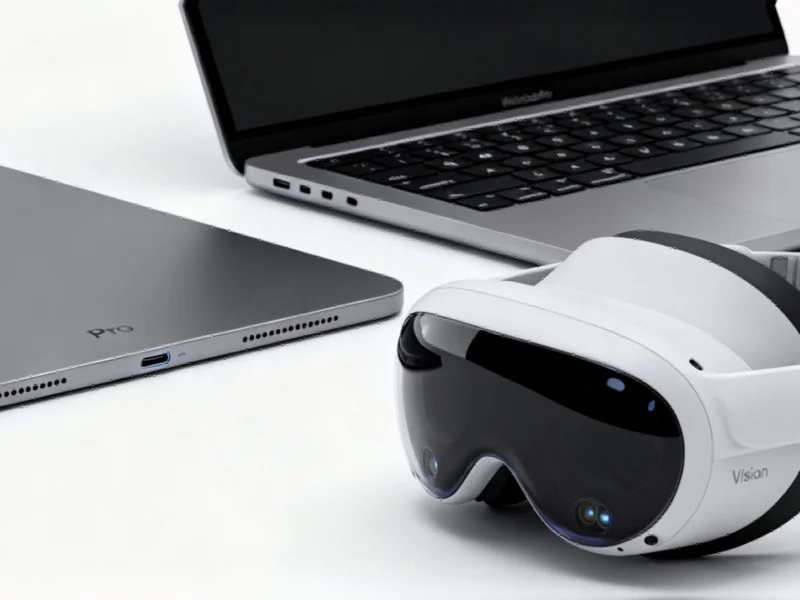Samsung Electronics is poised to reveal its groundbreaking trifold smartphone during the Asia-Pacific Economic Cooperation summit in South Korea, marking a significant leap in flexible display technology. The device, featuring an innovative dual-hinge design, represents Samsung’s most ambitious foldable to date and will be showcased alongside other Korean technological innovations during the multilateral gathering.
According to industry sources, the trifold phone can transform from a standard smartphone into a substantially larger tablet-like device when completely unfolded, offering users unprecedented screen real estate in a portable form factor. This development comes as Samsung continues to push boundaries in the competitive smartphone market with increasingly sophisticated foldable designs.
Technical Innovation and Market Positioning
The dual-hinge mechanism represents a significant engineering achievement that addresses previous limitations in foldable technology. Unlike conventional foldables that bend at a single point, Samsung’s trifold design incorporates two separate hinge points, allowing for multiple form factors and usage scenarios. This innovation arrives amid broader technological shifts across multiple industries, including precious metals markets experiencing volatility due to global trade tensions that often influence electronics manufacturing costs.
Industry analysts suggest the trifold smartphone could redefine productivity and entertainment experiences for mobile users, potentially creating new categories within the premium device segment. The timing of this reveal aligns with Samsung’s strategy to demonstrate technological leadership during high-profile international events.
Strategic Implications and Industry Context
Samsung’s decision to unveil the device at APEC underscores the growing intersection of technology and geopolitics, where cutting-edge innovations serve as symbols of national technological prowess. The exhibition will feature multiple Korean tech achievements, positioning the country as a leader in next-generation electronics. This development occurs as other sectors face challenges, including renewable energy projects encountering regulatory hurdles in various markets.
The trifold smartphone’s introduction comes at a crucial moment for the electronics industry, where manufacturers are exploring new form factors beyond traditional rectangular devices. Samsung’s approach mirrors broader industry trends toward increasingly sophisticated human-machine interfaces and follows recent advancements in AI integration within productivity software ecosystems.
Manufacturing and Supply Chain Considerations
Producing a device with multiple folding mechanisms presents unique manufacturing challenges, particularly regarding display durability and hinge reliability. Samsung’s investment in trifold technology demonstrates confidence in its manufacturing capabilities despite ongoing supply chain complexities affecting the broader electronics sector. These challenges are particularly evident in critical materials supply chains, where rare earths processing projects have faced recent cancellations.
The company’s ability to mass-produce such complex devices will depend on sophisticated manufacturing processes and robust quality control systems. This technological push occurs alongside ongoing debates about energy strategies and their environmental impacts across industrial sectors, highlighting the interconnected nature of modern technology development.
Market Reception and Future Prospects
Early industry reactions suggest the trifold smartphone could generate significant consumer interest despite likely commanding a premium price point. The device’s versatility addresses multiple use cases, from content consumption to mobile productivity, potentially appealing to professionals and tech enthusiasts alike. Market success will depend on factors including durability, battery performance, and software optimization for the unique form factor.
As Samsung prepares this landmark reveal, the industry watches closely to see how competitors will respond to this new category of foldable device. The APEC exhibition will provide the first public glimpse of technology that could shape smartphone design for years to come, establishing new benchmarks for what’s possible in mobile computing.
Based on reporting by {‘uri’: ‘bloomberg.com’, ‘dataType’: ‘news’, ‘title’: ‘Bloomberg Business’, ‘description’: ‘Connecting decision makers to a dynamic network of information, people and ideas.’, ‘location’: {‘type’: ‘place’, ‘geoNamesId’: ‘5128581’, ‘label’: {‘eng’: ‘New York City’}, ‘population’: 8175133, ‘lat’: 40.71427, ‘long’: -74.00597, ‘country’: {‘type’: ‘country’, ‘geoNamesId’: ‘6252001’, ‘label’: {‘eng’: ‘United States’}, ‘population’: 310232863, ‘lat’: 39.76, ‘long’: -98.5, ‘area’: 9629091, ‘continent’: ‘Noth America’}}, ‘locationValidated’: False, ‘ranking’: {‘importanceRank’: 142869, ‘alexaGlobalRank’: 385, ‘alexaCountryRank’: 206}}. This article aggregates information from publicly available sources. All trademarks and copyrights belong to their respective owners.



